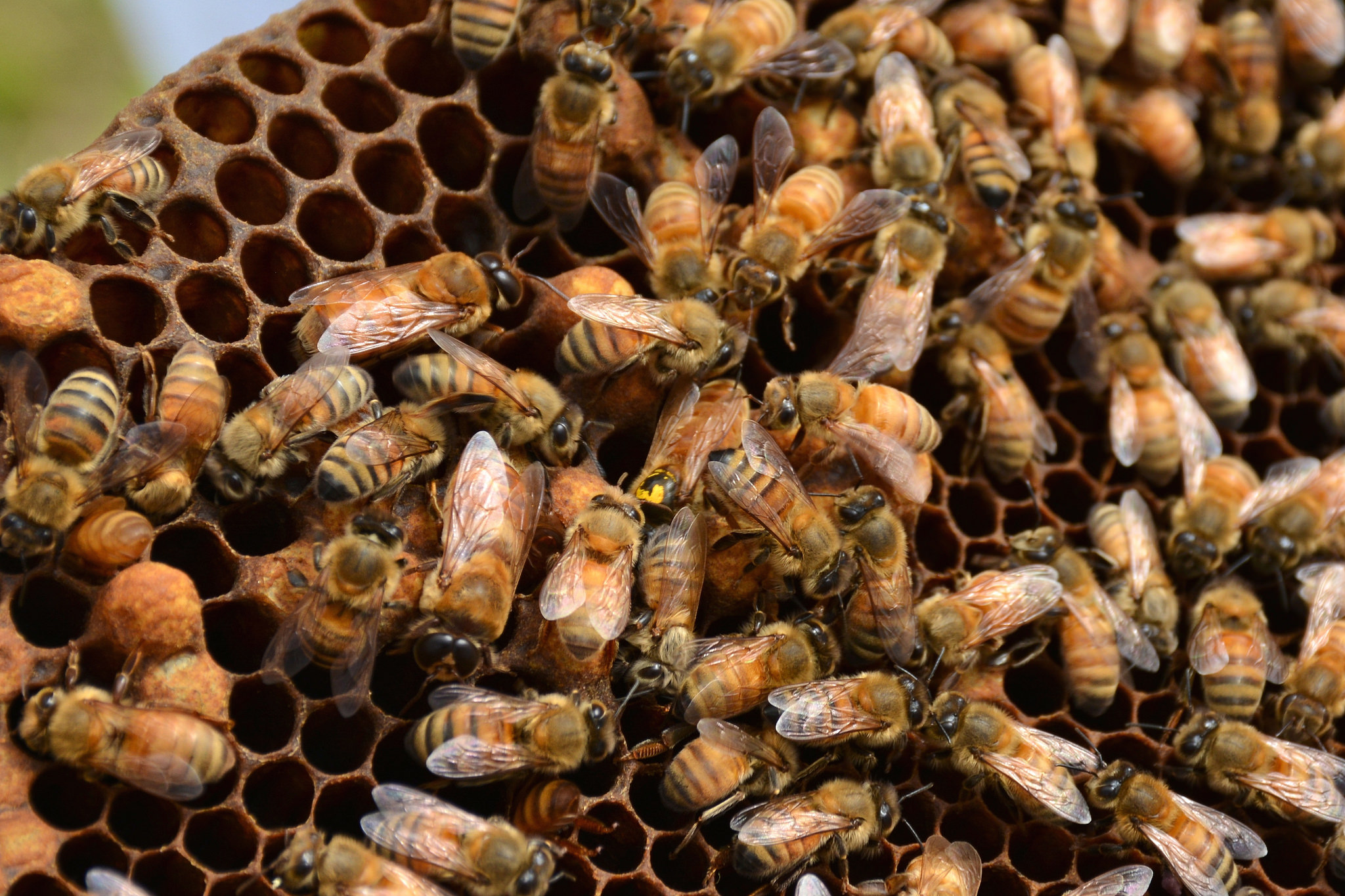 Earth & Space
Earth & Space
A dangerous habit: bees prefer pesticide-contaminated nectar

The impact of pesticides on pollinators is an important factor for the future of world food security, as well as a hotly debated and controversial topic. Pollinating insects like bees help to increase the yields of many food crops but, in doing so, are inadvertently exposed to pesticides in floral nectar and pollen.
Neonicotinoids represent a class of neuro-active insecticides with a chemical structure similar to that of nicotine, and are widely used to protect crops from insect pests. They have been introduced in the early 1990s as a seed treatment for crops such as oilseed rape or sunflowers that are pollinated by bees. As the plant grows, it absorbs some of the insecticide from the seed treatment and the substance spreads to all plant parts including the pollen and nectar consumed by pollinators like bees5 (read also the Break: The use of neonicotinoid pesticides affects wild bee populations).
Several reports have shown that low concentrations of neonicotinoids are not directly lethal for social bees but can alter their behaviour and reduce survival of entire colonies1-3. These studies have raised major public concern over bee welfare and, in 2013, led to a two-year ban on the use of the three most commonly used neonicotinoids (imidacloprid (IMD), thiamethoxam (TMX), clothianidin (CLO)) on flowering crops by the European Union. On the other hand it has been argued by critics that these pesticides are only deleterious to bees at concentrations higher than those present in the nectar and pollen of treated plants. Furthermore, it has been suggested that bees could choose to forage on other available flowers growing at the periphery of treated crops and hence avoid or reduce exposure4-5. Because this hypothesis had never been verified experimentally, it was time to test whether bees are, in fact, able to detect neonicotinoid pesticides and avoid contaminated nectars.
The experiments were performed on the foragers of two social bee species: the honeybee, Apis mellifera, and the buff-tailed bumblebee, Bombus terrestris. Bees kept in complete darkness in experimental cages were offered a choice between a sucrose solution and a sucrose solution laced with a specific concentration (1-1000 nM) of imidacloprid (IMD), thiamethoxam (TMX) or clothianidin (CLO). The food consumption was estimated 24 hours later by weighing the feeding tubes. Using this experimental set up, we found that bees did not avoid the neonicotinoid pesticides. Unexpectedly, we found that bees of both species actually preferred to eat more of the sucrose solutions laced with IMD or TMX than sucrose alone.
We also investigated whether the gustatory neurons in the bees’ mouthparts (the equivalent of the taste cells on the human tongue) are able to perceive the neonicotinoids. To this end, we used electrophysiological recordings allowing us to quantify the electrical signals generated by the neurons. To date, we haven’t found any gustatory neurones responding to stimulation with IMD, TMX and CLO. Similarly, no evidence was found that low doses of the nenonicotinoid pesticides affect the response of the gustatory neurones responding to sucrose.
In summary, our data indicate that bees are not deterred by neonicotinoids because they may not be able to detect them in the nectar. Instead, bees do actually prefer solutions containing low concentrations of IMD or TMX, even though the consumption of these pesticides caused them to eat less food overall. These results are alarming because they show that bees cannot control their exposure to neonicotinoids through intake of nectar. In addition, bees may not only endanger themselves, but eventually bring more neonicotinoid-laced nectar back to the colony, exposing the entire hive. This implies that treating flowering crops with IMD and TMX presents a sizeable hazard to bees and strategies such as planting flowers in field margins may not be enough to reduce the risk of bee poisoning. A global reduction of the use of pesticides might be the only way to limit the pollinator population decline.
Original Article:
Kessler S, Tiedeken E, Simcock K et al. Bees prefer foods containing neonicotinoid pesticides. Nature. 2015;521(7550):74-76. doi:10.1038/nature14414Edited by:
Dr. Tobias Preuten , Editorial Advisor - Review operation manager
We thought you might like
The use of neonicotinoid pesticides affects wild bee populations
Jun 10, 2016 in Earth & Space | 4 min read by Maria SentandreuWhen and where neonicotinoids are bad for bees
Oct 26, 2017 in Earth & Space | 4 min read by Ben A. Woodcock , Matthew S. Heard , Nadine Mitschunas , Brigitta Raffa , Dora Vaskor , Áron Bihlay , Judy A. Webb , Richard F. PywellGlobal contamination of honey by insecticides
Dec 18, 2017 in Earth & Space | 3.5 min read by Edward A. D. Mitchell , Blaise Mulhauser , Matthieu Mulot , Aline Mutabazi , Gaétan Glauser , Alexandre AebiThe Poisoned Oasis: Neonicotinoid Spillover Harms Bees Near Corn
Jul 5, 2018 in Earth & Space | 4 min read by Nadia Tsvetkov , Amro ZayedMore from Earth & Space
Discovery of the first radiation belt beyond the Solar System
Jan 27, 2025 in Earth & Space | 3.5 min read by Juan Bautista Climent OliverOne million (paper) satellites
Jan 24, 2025 in Earth & Space | 3 min read by Ewan Wright , Andrew FalleVolcanic Ash: A Nutrient Boost for Reef-Building Corals
Sep 18, 2024 in Earth & Space | 4 min read by Frank Förster , Tom SheldrakeAmmonia Energy: A Call for Environmental Awareness
Aug 29, 2024 in Earth & Space | 3.5 min read by Matteo Bertagni , Robert Socolow , Amilcare PorporatoLikely increase in coral thermal tolerance at a Pacific archipelago
Dec 29, 2023 in Earth & Space | 3 min read by Liam LachsEditor's picks
Trending now
Popular topics


